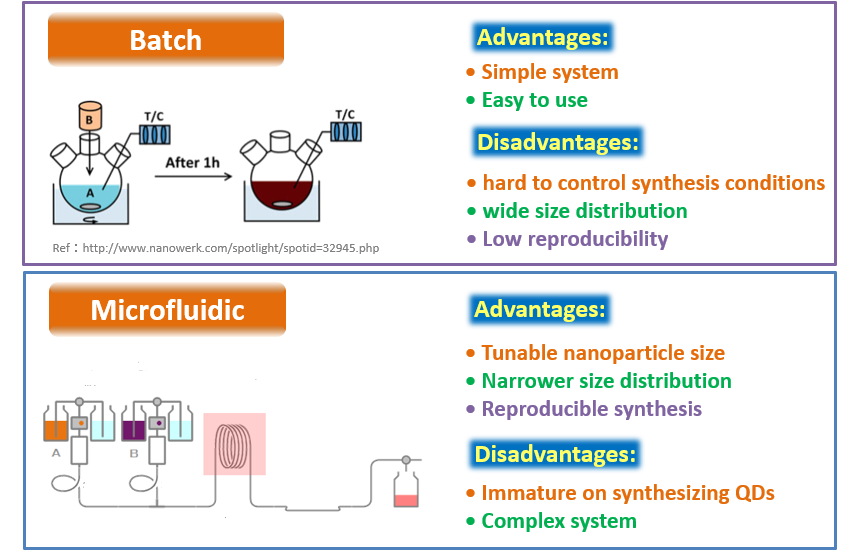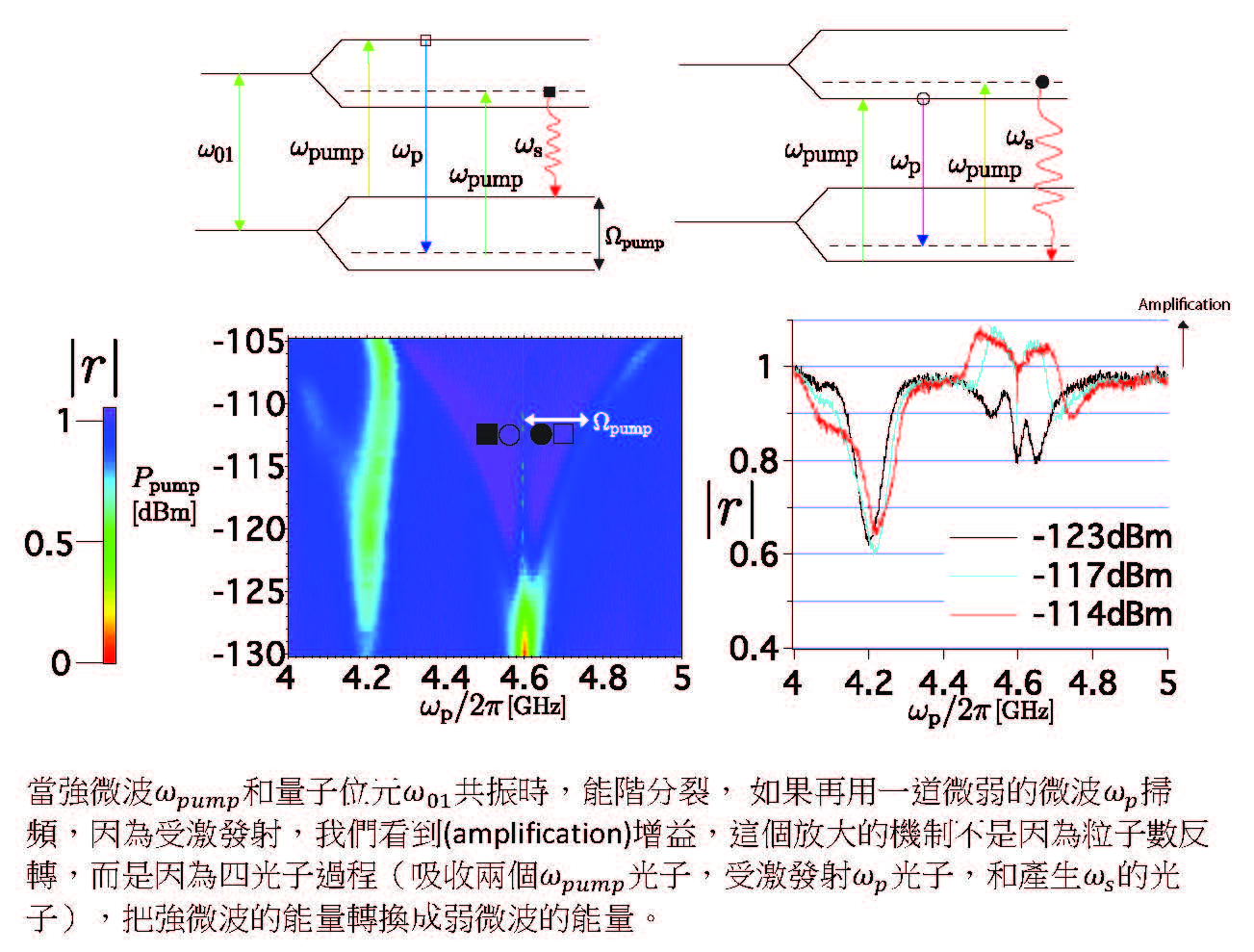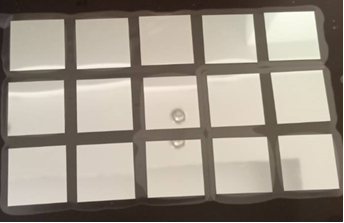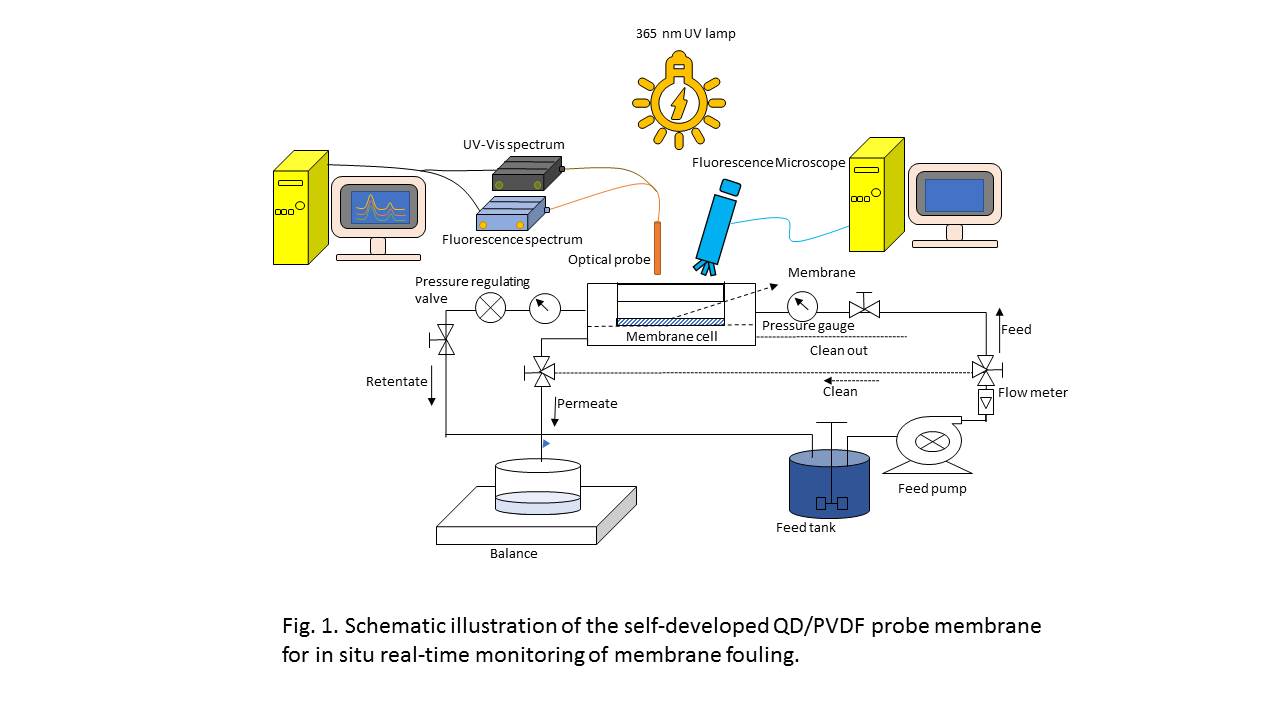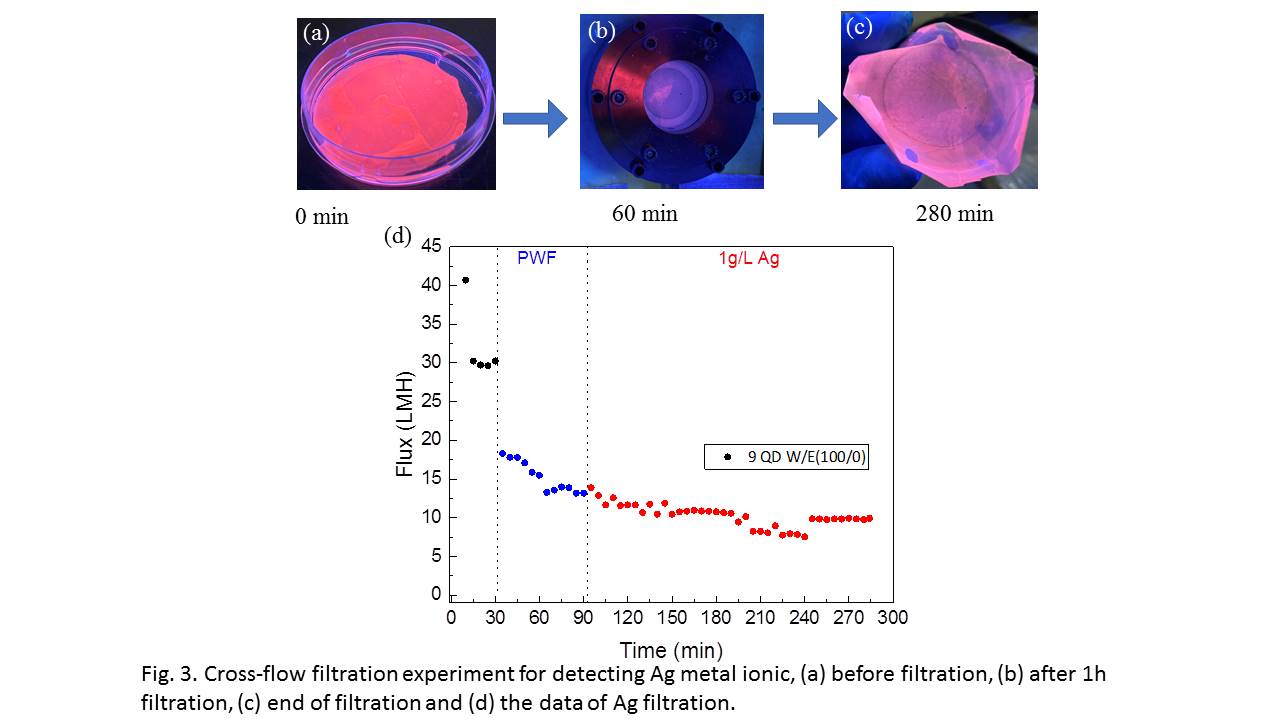| Technical Name | Quantum dot online real-time monitoring techniques for membrane fouling | ||
|---|---|---|---|
| Project Operator | National Chung Hsing University | ||
| Project Host | 武東星 | ||
| Summary | This technology develops in situ real-time QD monitoring techniques for dynamic membrane fouling. The same wavelength of light source arouse different size of quantum dots due to high fluorescence intensity of quantum dots, anti-photobleaching ability, and quantum confinement, thereby obtaining all kinds of color remarks. |
||
| Scientific Breakthrough | The utilization of quantum dots probe membrane with spectrometer is able to online detect the membrane fouling. Among these fouling detections, fouling at membrane pore openings could be judged from absorption spectrum with UV/visible spectrophotometer since the fouling deposited at membrane surface could not be adsorbed by quantum dots. The change in amount of fouling adsorbed onto the surface of quantum dots influences fluorescent property and intensity shown from adsorbed quantum dots and consequently determine fouling site. Hence, this technology could effectively provide the fouling information including fouling site, fouling composition, and fouling amount, as well as dramatically break the limits of state-of-the-art detection technologies on account of their presence of immediacy. |
||
| Industrial Applicability | This technique offers good opportunities for in-situ real-time monitoring of fouling in the chemical industry, biotechnology, biorefinery, and food sectors. It is now possible to investigate fouling layer thickness, distribution, composition, concentration and structural properties in high resolution and sensitivity, and therefore has considerable potential. This technique can extend the stable operating time and lifetime of membrane, and reduce the operation and maintenance cost of membrane module. Further, this technology has the ability to initiate automated backwashing, an essential requirement for a more widespread use of online monitoring techniques. |
||
| Keyword | nanofiltration ultrafiltration microfiltration membrane fouling online monitoring quantum dot fluorescent chemical industry biotechnology industry optical fiber | ||
- hhtseng@csmu.edu.tw
other people also saw

